One of the things that people often talk about when they define eurogames is the inclusion of high-quality game pieces; there’s even an entire thread about it on BoardGameGeek. But what is it about these pieces that makes us value them so much? How do they contribute to the game-playing experience? And why have they come to be associated with eurogames specifically?
While this is a conversation that could go on for years, I’ll try to condense my thoughts into something cohesive that’ll give you something to think and talk about with your gaming group (and other readers in the comments below). To simplify things a little bit, I’ll be writing mostly about two different sides of this question: the psychological side, and the more ethereal artistic side.
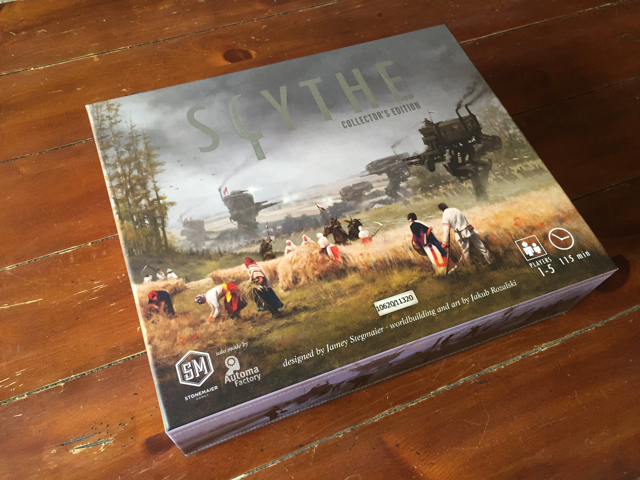
(Note: the images throughout this article are from my new copy of Scythe, which has some of the highest-quality components of any game I’ve ever seen. Plus the game is phenomenal. It’s amazing and you need to buy it.)
The psychology of weight and value
Interestingly, there’s been some scientific investigation into this very issue (sort of). Researchers gave participants in the study a clipboard and asked them to estimate the value of a foreign currency. Participants who were holding a heavier clipboard (2.3 lbs. instead of 1.5 lbs.) gave the currency a higher estimated value than those holding a lighter clipboard.
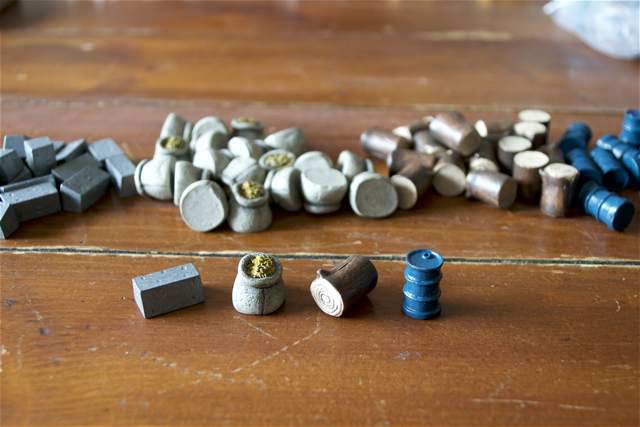
The experiment found similar results when the participants were thinking about more abstract things, like justice or how they felt about a particular city. You can read about the whole study on the National Geographic site if you want the details; it’s a really fascinating story.
In a nutshell, holding heavy things in our hands imparts a sense of importance and metaphorical weight to what we’re doing. It’s easy to see how this transfers to game components; when we hold heavier and more solid items, we’re given a sense of importance of the game itself. It changes players’ meta-game experience, as well as their perception of the game.
I don’t think high-quality components make anyone think that there’s more cosmic importance to their gaming, or that a particular game is making more of a difference in their life, but our brains do place more significance on all sorts of things when we’re holding heavier, more solid-feeling items.
The richness of experience
Before I get into the second reason that high-quality components are so appealing, I have to mention a conversation that I had with my wife on this topic. I was trying to explain why I think having nice game pieces added to the experience of gaming, and I was having trouble coming up with an articulate way to say what I was thinking. I kept trying to say that these pieces made the experience of gaming more “experiential” or “aesthetically satisfying,” and other nonsense that doesn’t really mean anything. But I finally came up with a metaphor that sort of works.
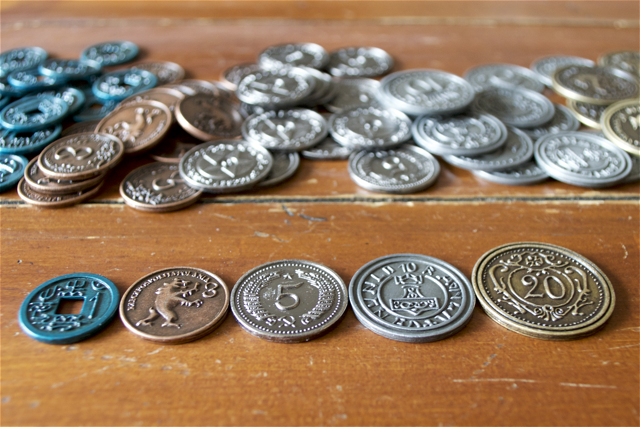
“Imagine you’re playing a game, and there are eight awesome things about it,” I said. “Strategy, social interaction, game mechanics, and so on. Adding high-quality components doesn’t change what makes the game itself great, it just adds to the entire experience. Basically, you now have nine things that you love about the game instead of the original eight.”
It’s a little strange, but I think it makes sense. Adding another facet of the game that’s aesthetically pleasing and visually/tactilely interesting makes the game a richer experience. There’s just more to the game. It doesn’t change the game, but simply makes the experience of playing that game deeper and more vivid. And that’s an important reason why these kinds of pieces are so highly valued by gamers.
The value of artistic investment
I’ve already discussed why I think board games should be counted among the various types of literature, but to make this point, I’ll be comparing it to more traditional visual art. What makes us really value art, whether it’s a painting, a song, a sculpture, or a performance of some type? It’s often a combination of things, from how the art makes us feel to the story that’s told by the artist to the simple aesthetic enjoyment of it.
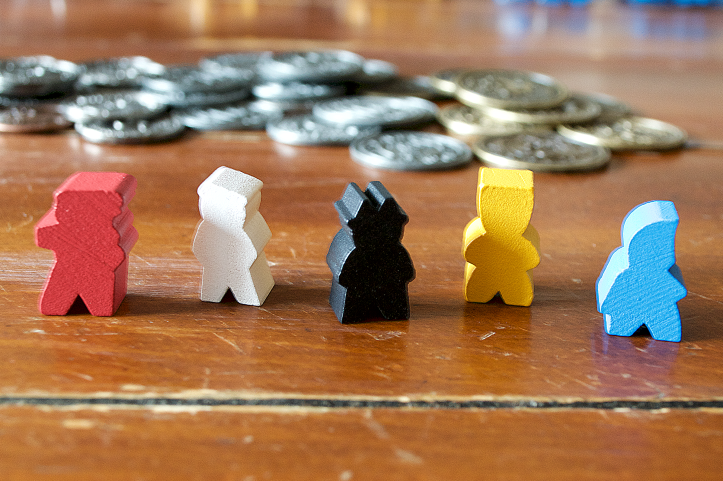
All of these things can be seen in the high-quality components of eurogames. Three-dimensional wooden pieces help bring us into the environment of the game itself and further embed us in the story that’s being told, for example. Picking up a resource that looks like a sack of grain instead of a plastic yellow cube makes the suspension of disbelief and the immersion in the entire experience more complete (even if just incrementally).
Traditional art is an intimate experience as well; artists put a lot of themselves into the pieces they create, developing both a signature style and communicating to viewers deep truths about themselves. The same can be said of board game designers and artists; seeing a game like Scythe that is lushly illustrated—so much so that a “worldbuilding” credit is given on the box—and lavishly appointed with wooden and metal pieces gives a sense of the care and deep investment of the people behind it.
And, of course, there’s simple aesthetic enjoyment. There’s something inherently more pleasing about holding a piece of wood or metal than there is plastic. Whether it’s the conflation of weight and value or something deeper, there’s just a warmer, more significant feeling you get from holding an organic-feeling piece. It’s difficult to describe, but it certainly plays into the feeling of quality and investment of designers and publishers.
Serious discussion about the artistic aesthetics of board games is difficult; with everyone’s differing preferences, different ideas of beauty, and contrasting views of the relationship between a designer and a player, I not only lack the vocabulary to do it justice, but anything I say can really only be applied to my own aesthetic philosophy of games.

But there’s definitely something here—if a board game has soul, it may very well be contained in the pieces that we hold in our hands.
Why eurogames?
Most of what I’ll posit here about why high-quality pieces have come to associated with eurogames is based on my own (admittedly limited) knowledge, so take it with a grain of salt. If you have theories of your own, I’d love to hear them in the comments!
Anglo-American games, unlike eurogames, were primarily descended from wargames. And while a lot of wargames have really fantastic miniatures and expansive, detailed boards, focus is placed squarely on strategy and play. This makes sense if you think about wargaming’s progenitor, Kriegsspiel, which was essentially a wargame used for training military tactics. Military commanders weren’t focused on the experience of play: they just wanted trainees to gain a better understanding of military strategy.

Wargaming has an altogether more serious atmosphere. That’s not to say that people don’t have fun when they play, or don’t focus on the overall experience of the game, but in general, I think it’s safe to say that the focus of the genre is about strategy and matching wits. These games are often very large and complex, and they can take a lot of time to play, making a victory feel a bit more weighty than a eurogame victory.
Eurogames, on the other hand, developed from family games, and even specifically—though often implicitly—discouraged violence and conflict. This means that the same high-stakes, very complex gameplay seen in Anglo-American games wasn’t popular on the Continent. Games were more of a family pastime in Europe, and that play emphasized the quality of “family together” time.
What does this have to do with high-quality game pieces?
Eurogames’ focus on the experience of play, rather than tactics, lends itself to a focus on enjoyment and tactile pleasure. Picking up a small wooden cube instead of a flat cardboard counter is just inherently more satisfying, potentially because of the organic feel of it. The same can be said of metal pieces; they’re just nicer to play with (at least partially due to the phenomena discussed above).
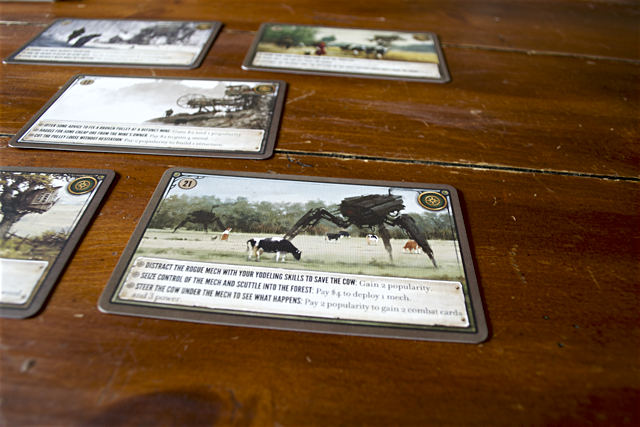
The connection between the focus on the overall gaming experience and the use of higher-quality components is a natural one; by using pieces that are more aesthetically pleasing (both to the eye and the hand), the overall experience of the game is improved.
No longer limited to eurogames
Although eurogames have always had the reputation of including nicer components than Anglo-American games, that reputation is being challenged by games like Stonemaier’s absolutely gorgeous Scythe (pictured throughout this article). The miniatures in Eric Lang’s Blood Rage are also of notably higher quality than some other Anglo-American games.

But eurogames will likely reign supreme when it comes to aesthetically pleasing, high-quality components, at least for a while. The combination of thematically abstract pieces, a long-time tradition of high-quality production, and the expectations of players ensure that eurogame producers will certainly have this in mind when they’re deciding on how to create their games.
What do you think about eurogames and their high-quality components? Is this something that’s important to you? Which games have your favorite playing pieces? Share your thoughts in the comments below so we can talk about it!
[…] hype surrounding Stonemaier’s newest game, Scythe. I featured photos of it in my article on why high-quality gaming components are so appealing. Board gaming forums and Facebook groups have been seeing a massive number of photos, reviews, […]
LikeLike